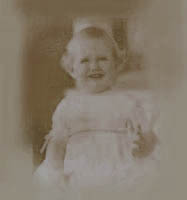| Stories
of her childhood years paint a picture of a cheerful, chubby child,
curled up under the piano as she listened to her mother's beautiful
singing. Indeed mother Muriel was, by all accounts, a wonderful mezzo-soprano
who had a passion for bel canto. She was her first voice teacher
and until Joan was 18 she had no other. And until then, neither mother
nor daughter never doubted that Joan's was the voice of a mezzo-soprano.
Thus, one could assume that Joan Sutherland, having received
a sustained infusion of bel canto into her young subconscious,
would almost by instinct embrace the bel canto repertory as she
began her singing career. But at 18 she won a singing competition that
awarded her a 2-year scholarship, and with it a teacher who detected
in the young voice that was trained to sing low the makings of a dramatic
soprano - a judgment that initially elicited protestations that eventually
dissolved into acquiescence. And so the process of lifting the voice
began - she learned the dramatic arias of Verdi and Wagner and, now
modelling her voice after Kirsten Flagstad's, she dreamt of one day
becoming a Wagnerian soprano - perhaps even singing Brünnhilde
on stage, in full regalia!
In 1946 Joan Sutherland made her public debut singing from the chorus.
This was soon followed by concert performances and solo recitals. On
many of these occasions, her accompanist was a talented young pianist
by the name of Richard Bonynge. He left for London a few years later
on a scholarship to the Royal College of Music as the young Joan Sutherland
was setting her sights on a modest career at . . . Covent
Garden.
Photo courtesy
of Maestro Bonynge
|
